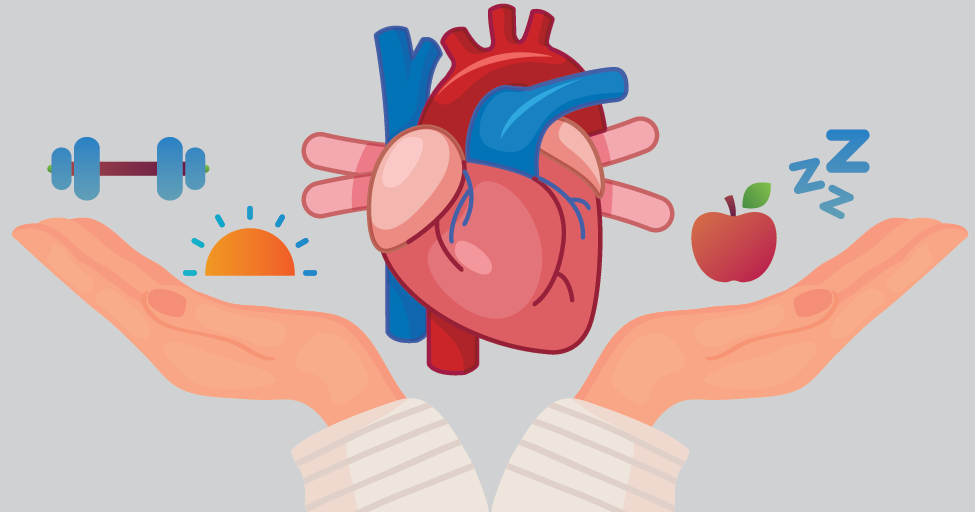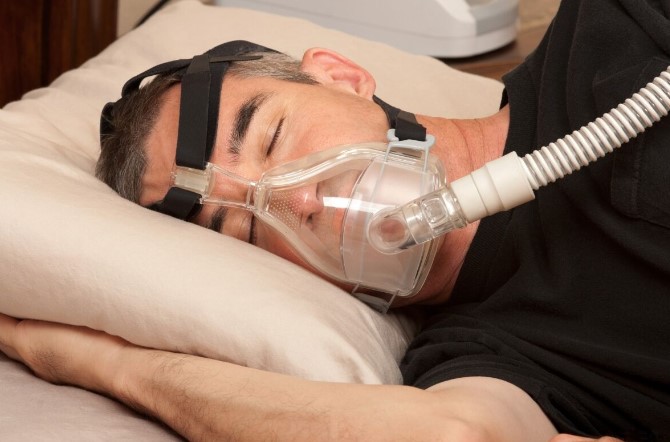Penn State students consider impact of lifestyle choices on heart health during American Heart Month | Lifestyle

Heart disease is the leading cause of death in the U.S., according to the Centers for Disease Control and Prevention’s mortality data from 2020. And, February is American Heart Month, where the U.S. highlights the implications of heart disease.
On a global scale, cardiac arrest kills more people than the collective deaths caused by colorectal, breast and prostate cancer, influenza, pneumonia, automobile accidents, HIV, firearm incidents, and house fires combined, according to the American Heart Association.
Due to the hecticness of college life in which Penn State students need to focus on homework assignments, internships and independent living, many students said they pay minimal attention to their heart health.
For Kylie George, she said she hardly focuses on preventative measures to help her future health.
“I don’t think it’s something a lot of people really think about,” George (senior-English) said. “So I don’t think there’s a big effort made by a lot of people our age.”
However, she said students should improve their heart health awareness — in terms of how their actions consequently impact their bodies — and attempt to improve their daily behaviors.
“It’s never a bad thing to be aware of what you’re doing and how that can impact your overall health, especially your heart health,” George said. “It’s good to be aware now and be preventative — if at all possible — at our age because a lot of people get to [a] point when they’re older and say, ‘Oh, I wish I had done this and that when I was younger.’”
George said the main way she maintains her health is through her daily walks around campus to get from class to class.
Maintaining an active lifestyle can improve one’s heart health due to lowered blood pressure, improved blood circulation throughout the body and reduced stress levels, according to the American Heart Association.
Research from the University of Michigan Health highlights the benefits of consistent walking, since it’s a form of aerobic exercise.
“A lot of people our age do a lot of walking,” George said. “But that’s not even really by choice or done in an effort to be healthy.”
Since George lives a decent distance away from campus, she said she walks approximately 30 minutes each day to get on campus alone — not including the time it takes to travel to the necessary buildings.
Although participating in daily exercise for approximately 30 minutes to an hour a day aids people’s physical and mental well-being, a Johns Hopkins Medicine article said people should not solely rely on periods of exercise and instead increase their overall hourly activity.
In fact, Johns Hopkins Medicine said people’s health would benefit from less sedentary behavior as a whole.
To do this, the article said people should aim for 10,000 steps a day, five minutes of movement or activity per hour and a minimum of 30 minutes of vigorous exercise throughout the week.
According to a study by the National Center for Biotechnology Information, college students typically experience changes in their lifestyle that increase their risk for heart health issues, including cardiovascular disease.
The main lifestyle changes include a decline in activity levels and an increase in sedentary behavior — along with worsened sleep, eating patterns and stress levels.
A 2019 NCBI study found that decreased or poor sleep schedules increase students’ risks of being stressed, overweight and having higher blood pressure.
High blood pressure, without interference by medical professionals and lifestyle changes, can lead to increased risk for “heart disease, stroke, heart failure, kidney disease, pregnancy complications and cognitive decline,” according to the CDC.
Although George has never taken a first-aid or CPR course in the past, she said she finds the skills to be “very helpful” to know and may look into certification processes in the future.
Immediately performed CPR, which is a lifesaving procedure performed in times of emergency when a person’s heart stops beating, can “double or triple” the likelihood of survival following an incident of cardiac arrest, according to the AHA.
“It’s obviously a good tool to have, especially since so many of us are living with others and out taking care of ourselves without our parents to help with everything,” George said.
MORE LIFESTYLE CONTENT
It’s not every day that artwork from the European Renaissance finds its way to State College.
Kareena Pandya, who currently serves on the diversity and health care task force within Penn State’s pre-medicine honor society Alpha Epsilon Delta, said people should begin considering their heart health early and learning how to approach heart issues.
Beyond taking personal measures to prevent heart disease, Pandya (freshman-genetics and developmental biology) said early access and certification in CPR is “super duper” important today because individuals can be better prepared for any situation that develops.
Pandya said Campus Recreation is an American Red Cross Authorized Provider for safety courses like American Red Cross Adult CPR/AED and First Aid, which teaches participants how to appropriately respond to emergencies regarding cardiac issues, breathing or general first aid.
“Before I got started, I thought it would take months [to learn CPR] and would be a long windy process to get certified [and] understand all the different nuances to the actual technique,” Pandya said. “But in reality, it actually only takes a couple hours to learn and perform.”
She said students and community members have an array of CPR certification resources available to them across campus — even through programs offered through Penn State’s Kinesiology Department.
“A lot of different demographic groups and ethnicity groups have different risk factors for heart disease compared to others,” Pandya said. “I think if you couple that with [the] lack of proper health care access that they have, then that can also contribute to heart health [outcomes] overall.”
For instance, Pandya said Indians are “three to 20 times at higher risk of developing heart disease compared to other demographics,” and she said other minoritized groups are also disproportionately affected.
“I would say a healthy heart is central to overall good health,” Pandya said. “Embracing a healthy lifestyle at any age — no matter if you’re a college student or older — can really help you in taking the preventative steps toward heart disease and lowering your risk for both heart attack and stroke.”
Pandya said college students go through a period of adjusting when transitioning to college life due to their new environment and routine, and these adjustments can create risks for heart disease.
MORE LIFESTYLE CONTENT

With five weeks of upcoming stand-up shows in the State College area, Wise Crackers Comedy C…
For instance, Pandya said some college students may struggle with maintaining proper sleep schedules, physical fitness regimes or dietary decisions — all of which can increase one’s risk for heart disease.
“Some major lifestyle choices that college students can make toward improving their heart health for the future would be decreasing their use of tobacco, cannabis and alcohol consumption,” Pandya said.
Pandya said exposure to secondhand smoke acts as a significant contributor toward coronary artery disease, which she described as a “very, very significant heart disease within our society.”
Beyond these limitations, Pandya said students could take preventative measures by monitoring their blood pressure levels and educating themselves about their family medical history, especially heart history, so they can “make better and more appropriate lifestyle changes.”
In terms of her own personal health, Pandya said she tries to complete physical activity at the on-campus gym at least twice a week and simply increases her fitness by walking to class rather than taking the bus.
When selecting meals at Penn State’s dining halls, Pandya said she keeps in mind Michelle Obama’s “MyPlate” dietary guidelines that help people balance their carbohydrates, proteins, vegetable, fruit and dairy intakes.
To maintain one’s health, many doctors promote healthy diets composed of “fruits, vegetables, whole grains, lean meats and low-fat dairy products,” according to the CDC.
Foods containing high levels of omega-3 fatty acids — which is commonly found in fish like salmon and tuna — also aids heart health, according to research conducted by the AHA.
Consumption of nuts like almonds, walnuts and pecans is known to lower one’s risk for cardiovascular disease due to the high amounts of healthy fats, proteins and fibers within the products, according to the AHA.
Although the costs of healthy food can limit some students’ purchases, Pandya said she’s found many dining locations on and off campus that provide reasonable heart-healthy food options, such as Roots Natural Kitchen and Playa Bowls.
She said the a la carte food locations within on-campus dining locations, such as Bowls @ South and In a Pickle, allow students to choose exactly what they will eat for the day — unlike the buffets where food is already prepared in its entirety.
Pandya said she especially enjoys eating at In a Pickle because she can choose how many vegetables are in her meal and whether she wants to use wheat or white bread, which are decisions that “help make sure you’re getting proper nutrition.”
After finishing a workout at the gym, Pandya said Shake Smart is another dining location that consistently offers healthy food options for the student body.
Since stress is a contributor to heart disease as well, Pandya said she attempts to minimize her anxiety by listening to music and participating in yoga, which helps “bring [her] back to [her] center.”
Pandya said students should consult with their primary care doctor about methods to improve and monitor their heart health if they’re interested in undergoing a lifestyle change.
Kelsey Eckerd, a student involved in Penn State’s chapter of the American Medical Student Association, said many factors impact heart health — some controllable and some not.
“I don’t think college students really think about heart health unless they have some sort of medical condition,” Eckerd (senior-biology) said.
MORE LIFESTYLE CONTENT

While I enjoy going to counter-service breakfast and lunch spots in downtown State College l…
Nevertheless, Eckerd said college students can begin monitoring and considering how their daily behaviors affect their current and future health.
Eckerd said college students have access to a wide range of health-related programs and resources that they’ll likely never have access to later in life — at least not in such breadth.
“For college students, this is probably the only time in [their] life that [they] have access to a free gym and free workout classes, so take advantage of that while you’re here,” Eckerd said.
While attending Penn State, Eckerd said she utilizes the free workout classes at the Intramural Building to achieve her recommended amount of exercise each week.
Penn State also has the Nutrition Clinic that provides free, individual nutrition counseling provided by a registered dietitian, according to the Nutrition Clinic website.
“It’s easier to start a [healthy lifestyle] now rather than after you graduate and are truly on your own,” Eckerd said. “It’s easier to start with the safety net of college, that way when you’ve [graduated], you know how to do it yourself.”
She said an easy modification college students can make is being more aware of their alcohol consumption.
“Obviously it’s pretty characteristic to be a heavy drinker in college, but if that continues throughout your life, it could increase your heart rate and blood pressure over time,” Eckerd said.
A study conducted by the Harvard T.H. Chan School of Public Health discovered individuals who engage in binge-drinking behaviors were 72{b574a629d83ad7698d9c0ca2d3a10ad895e8e51aa97c347fc42e9508f0e4325d} more likely to have a heart attack than their counterparts who didn’t participate in the behavior.
Eckerd said college students could also work to make their daily meals more nutritious by considering different add-ins or substitutions that could be made.
To enhance her dinners from Trader Joe’s, Eckerd said she adds her own proteins and vegetables into the frozen food products to make them more healthy.
Eckerd said students should also be aware of the training programs available to them.
Beyond CPR certification, Eckerd said students should look into automated external defibrillator training because AEDs provide users with “verbal cues” on what to do for the victim, and they’re required in every building.
Mariella Dixson, who is also a member of AMSA, said learning CPR and AED is “smart” because “you never know if you could be in an [emergency] situation,” and by learning basic medical protocols “you could be able to help someone.”
Dixson (senior-biobehavioral health) said choosing heart-healthy lifestyle choices while in college can make it easier to continue those behaviors at an older age.
“A lot of people will at least eat fruits and vegetables semi-regularly, so that’s better than nothing,” Dixson said. “There’s no point in doing cold turkey [diets] or jumping right into new routines because you’re not going to be consistent [with major adjustments].”
If students hope to implement heart-healthy behaviors into their lives, Dixson said they should make “attainable goals” that could slowly be met — like adding a certain amount of fruits or vegetables to one’s diet each week.
“A lot of college students — I’m sure — love pasta because it’s a very easy meal to make,” Dixson said. “But what I started doing was adding a bunch of cooked vegetables into my pasta dinners, [which] was a [simple] way to start adding in various vegetables to [my diet].”
Dixon said making small changes during young adulthood is essential.
“Establishing those patterns while you’re younger will most likely make it easier to continue [making heart-healthy decisions] when you get older and are more at risk for disease.”
MORE LIFESTYLE CONTENT

In the early morning, Penn State students scramble through snow and ice to 8 a.m. classes in…





